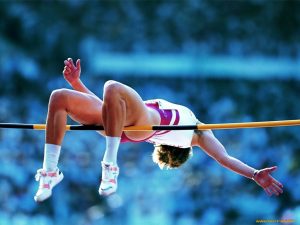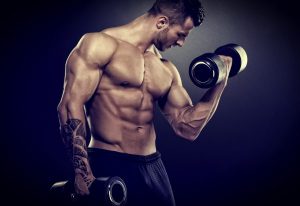Strength training program
Definition of the concept
Force as a physical quantity is the product of mass and acceleration. If we take such a definition as a basis, then it is obvious why in different sports the indicator of strength acquires a decisive importance, being one of the driving factors of sports performance .
Hence the high importance of purposeful training. That being said, strength training can sometimes serve different purposes. In fig. 1 summarizes the possible goals and effects of strength training (Boeckh-Behrens, Buskies, 2001).
In addition to a purely physical understanding of strength, strength is also viewed from a different perspective in the context of motor sports. Strength is the ability of the neuromuscular system to overcome resistance due to muscle contraction (due to the processes of signal transmission and metabolism), to resist this resistance or to hold it (Grosser, Starischka, 1998). In addition, in addition to the general definition of strength in sports, an important role is assigned to its characteristics. These include various types of work and the form of muscle contraction , forms of manifestation of strength, as well as its types and factors influencing them. Later, in the course of describing the role of strength in sports, we will consider them in more detail.

Structural Criteria and Forms of Strength
General and Special Force
Strength can be divided into general and special. At the same time, “total strength” is an independent concept that does not depend on sports and applies to all muscle groups. Special strength refers to the development of specific muscle groups that play an important role in a given sport (Weineck, 2007).
The type of muscle work
There are two types of muscle work ( muscle contractions ): static and dynamic (Kolster et al, 2008).
With a static type of muscle work (static contractions), body parts do not change their position in space. Despite the muscle tension, there are no movements and the length of the muscles also does not change. With static muscle contractions, they hold the burden or resist it without raising or lowering it.
With a dynamic type of muscle work (dynamic contractions) , movement occurs; in this case, there is a movement in space, in which external resistance is overcome due to changes in muscle tension. If, when overcoming resistance, the muscles are shortened, they talk about their concentric contraction. Concentric contractions are characterized by a decrease in the distance between the beginning of the working muscle and the place of its attachment. When a muscle in a state of tension yields to external force and stretches, they speak of eccentric contraction. In this case, the distance between the beginning and the attachment of the muscle increases.
The form of muscle contractions
The type of muscle contraction is closely related to the forms of muscle contraction . Isometric contractions correspond to the static type of muscle work . If, for example, you need to lift a heavy load, the contracting muscle element is shortened, and the elastic (tendon) is stretched. At the same time, there are no visible signs of the movement of gravity, its initial position remains unchanged.
In the case of isotonic contractions , in contrast to isometric contractions , the length of the elastic element of the muscle does not change. The movement or lifting of weight occurs due to the contracting element of the muscle, and the elastic element is not stretched at the same time. This form of muscle contraction is more likely to be discussed theoretically, since it is rare in sports (Kolster et al., 2008). Since the ratio of weight and force is constantly changing during movement, the degree of muscle tension also changes accordingly. Such a model, however, allows for a better understanding of what is meant by auxotonic contractions.
Auxotonic contractions are a mixed form of isometric (constant length) and isotonic (constant tone) contractions, which is characterized by different muscle tension and a change in its length. Auxotonic contractions are most often found in sports activities. When lifting weights from the floor, muscle tone first increases (isometric shape) without changing its length. Then, as a result of a further increase in muscle tone, weights rise (isotonic form), at which changes in the angle of inclination of the limbs and torque constantly lead to new changes in muscle tone. Thus, the neuromuscular system constantly adjusts to the changing balance of weight and strength and changes in speed.
Forms of power
In training practice, depending on the types and forms of its manifestation, such forms of strength as maximum strength , speed strength and strength endurance are distinguished , and speed strength is often understood as two of its varieties – explosive strength and reactive strength (Giillich, Schmidtbleicher, 1999).
Maximum strength
Maximum strength is the primary ability underlying other forms of strength. It has a positive effect on speed strength and strength endurance . As an arbitrary adjustable maximum strength indicator, it demonstrates the real performance of the muscular system . It is believed that voluntary innervation of a muscle , as a rule, does not affect all muscle fibers, so that there is still an autonomously protected reserve – the potential for further development of strength…
This autonomously protected reserve, which is also called the power deficit, in untrained people is about 30% of the absolute power potential. As a result of training, it can be reduced to 5% (Giillich, Schmidtbleicher, 1999), which is explained by the better activation of the muscles and the fuller use of their potential. As a result, the maximum strength is also increased. Absolute strength, corresponding to the complete exhaustion of the power potential, is not achieved as a result of voluntary contraction. This requires physical methods, such as electrical stimulation, which leads to the full activation of the entire muscle.
Maximum force can also be measured in relation to overwhelming resistance (Grosser, Starischka 1998). According to some researchers (Giillich, Schmidtbleicher, 1999), there are no qualitative differences in static-isometric and dynamic-concentric measurements. The results of both of these approaches to measuring the maximum strength of expressions correlate with each other. The differences are explained rather by the use of different measurement methods than by the difference in the types of physical strength itself. Similar conclusions can be drawn when considering the so-called eccentric maximum force. The eccentric maximum force is greater than the dynamic-concentric force, since it occurs not only with voluntary innervation of the muscles, but also with the action of passive elastic forces and also reflex activation of muscle fibers as a result of irritation during stretching.
The definition of dynamic-concentric maximum force should be as standardized as possible. It is necessary to set the amount of load that can be overcome once. This load is also called one repetition maximum, or 1 RM (Boeckh-Behrens, Buskies, 2001). However, it is not easy to determine the value of 1 RM. In this regard, for strength training it is rather difficult to give specific recommendations for managing the intensity of the load, since recommendations should usually take into account the value of 1 RM.
Remember : The highest degree of strength effort that the neuromuscular system can develop due to the maximum voluntary muscle contraction is called maximum strength.
Fast power
Rapid force can be represented in the form of a realized impulse, or impulse of force, which is characterized by the duration, the magnitude of the peak and the steepness of the rise. The duration of the impulse is in a certain sense already set by this or that sport. Therefore, special attention should be paid to the magnitude of the force and the steepness of its growth. The maximum strength value (peak) – especially in speed-strength disciplines with impulse duration more than 200 ms – is mainly determined by the level of maximum strength.
The steepness of the increase in force during one impulse is an important characteristic of the so-called explosive force (Gtillich, Schmidtbleicher, 1999). The starting force is the force that is reached after 50ms. It reflects the ability to develop strength already at the very initial stage of muscle contraction (Grosser, Starischka, 1998).
Rapid strength is influenced by the indicators characterizing the stretch-shortening cycle. They differ from speed-power loads with isometric or purely concentric contractions and reflect strength ability that is sufficiently independent of other factors. This ability is to create as much momentum as possible in the stretch-shortening cycle and is called reactive force. Physiologically, this is manifested in the fact that the corresponding muscle is first stretched, that is, it works eccentrically. Immediately after this, a concentric contraction occurs, in which the muscle is shortened again.

During the stretching phase of the muscles, in addition to voluntary contraction, elastic forces and the stretching reflex also play an important role. Since the severity of the effect depends on time, there are short (less than 200 ms) and long stretching-shortening cycles (more than 200 ms) (Giillich, Schmidtbleicher, 1999). Work in the stretch-shortening cycle in sports is very common, for example, in such forms as running, jumping, as well as in various throwing and pushing disciplines.
Remember : The ability of the neuromuscular system to generate the greatest impulse within a short period of time is called rapid strength.
Strength endurance
Strength endurance refers to the ability to produce a large number of impulses while simultaneously resisting fatigue caused by relatively prolonged muscle tension. The value of the developed force in this case is 30% of the value of 1 RM (Grosser, Starischka, 1998). The number of impulses depends on the explosive force and the maximum force if a sufficiently high resistance is overcome. The ability to resist fatigue for 10 seconds primarily depends on the efficiency of the transmission of neural impulses to the endings of the motor nerves. With a longer duration of the load, the reserves of energy-containing phosphates [ATP and creatinine phosphate (CP)] and the buffer capacity come to the fore, which allow the body to counteract the appearance of H + ions and an increase in lactate concentration (Giillich, Schmidtbleicher, 1999).
Remember : Strength endurance is the ability of the neuromuscular system for a certain time to develop the largest possible amount of force impulses as resistance to a sufficiently high level of load (dynamic) or to maintain tension for a long time without decreasing muscle tone (static).
Strength parameters / strength abilities
The above-described forms of strength (maximum, fast, reactive strength and strength endurance) are based on certain parameters of strength, or strength abilities. These include the volume of muscle mass, voluntary activation of the neuromuscular system, the speed of muscle contraction, the reactive ability to maintain tension, and the ability to resist fatigue (Boeckh-Behrens, Buskies, 2001). These strength abilities are of particular importance, since they lend themselves to purposeful improvement through the use of special training.
The volume of muscle mass
During training, an increase in the amount of muscle mass occurs, which, together with an increase in the amount of contractile proteins (actin and myosin), affects maximum strength, which, in turn, affects fast and reactive strength and strength endurance. Accurate measurements of muscle mass using medical imaging techniques are often time consuming and expensive. Indirectly, you can judge the changes in the amount of muscle mass based on measurements of body size simultaneously with the measurement of body weight and fat mass.
Voluntary activation of the neuromuscular system
Voluntary activation of the neuromuscular system is the ability to voluntarily contract a large part of the muscle with a high frequency, which allows you to develop an effort close to absolute. Muscle activation is the result of recruitment (how many functional motor units are activated?), Frequency (how often does muscle fiber irritation occur?) And synchronization of motor units (are certain units simultaneously stimulated?) (Giillich, Schmidtbleicher, 1999). Like the amount of muscle mass, voluntary neuromuscular activation affects all forms of strength.
The speed of muscle contraction
The speed of muscle contractiondetermines the rate of development of strength regardless of the level of maximum strength. It depends to a large extent on the specific combination of muscle fibers involved and the rate at which they are recruited. The more fast muscle fibers there are, the faster the muscle contracts. Regarding the speed of recruitment, it should be borne in mind that slow-twitch muscle fibers that are most resistant to fatigue are activated first.
Next comes the turn of fast, strong, but also quickly fatigued muscle fibers. In accordance with the training requirements, you can shorten the time from the beginning of recruiting to the moment of maximum muscle activation and, accordingly, develop the necessary strength faster. Such an effect on the speed of muscle contraction, due to the peculiarities of training,
Reactive ability to withstand voltage
The reactive ability to maintain stress makes it possible, under strong stretching, to create large force impulses during just one stretching-shortening cycle. During exercise, you can increase the elasticity of the tendons and connective tissue of the muscles. In addition, it is believed that enhancement of the stretch reflex also plays a role (Boeckh-Behrens, Buskies, 2001). It should be noted that training the reactive ability to maintain tension affects only reactive strength. Its influence on other forms of strength (maximum, fast strength or strength endurance) is practically not observed.
The ability to resist fatigue
Impact factors
The variety of different factors influencing strength characteristics can be roughly divided into three groups (Schmidtbleicher, 2003). Psychological factors such as readiness for great stress, willpower, etc. can be considered as motivational factors. Neuromuscular factors include intramuscular and intermuscular coordination, that is, on the one hand, the interaction of a nerve and a muscle within one muscle, on the other hand, the coordination of the work of various muscles. This also includes aspects such as recruitment, irritation frequency, and timing. Morphological factors are the third group of factors influencing the characteristics of strength. These include muscle volume, muscle fiber composition, elastic properties of the musculo-tendon system, as well as muscle capillary density and enzyme activity.

Fighting for a large mass requires great strength
Although powerlifters do the same exercises as we bodybuilders, they don’t get the targeted hypertrophy and muscle symmetry we need. The small number of repetitions is “to blame” for this. Powerlifters rarely get out in 3 reps in a set and consider work in 1-2 reps to be the main one for themselves. It is this low-repetition training that builds strength.
In bodybuilding, the result of training is rigidly tied to the formula “8-12 repetitions per set”, and even the sets themselves need to be done in several dozen.
Many beginners naively undertake to contradict this rule. At first, they do not have so much strength, and therefore, with 8-12 repetitions, the working weights turn out to be quite frivolous. Self-esteem forces them to increase the weight, but then the number of repetitions in the set decreases. As a result, beginners usually train in a 6-8 repetition mode, which is borderline, i.e. does not really give either mass or strength. This is where the frequent disappointment in our sport comes from.
In the years of my youth, the ranks of bodybuilders were joined by already strong guys who managed to show themselves in strength forms. The 8-12 repetition mode gave them a quick and impressive return, and therefore was accepted as the main one. The current age of unisex has brought a whole different generation to bodybuilding. If earlier they went to us for the beauty of the physique, today they go after the missing muscles. As they say, feel the difference!
To modern beginners, I would give this advice: wait bodybuilding! While powerlifting doesn’t provide those well-defined muscles that shine on the podiums of our tournaments, it is unmatched in building a solid muscle foundation. The first step is to strengthen your body with pure strength training.
At the same time, it will remove the confusion from your heads. The craving for power records will cease to be wrong and become a powerful driving force for your training.
The coaches will agree with me. The essence of bodybuilding does not immediately reach beginners. At first, they just try to raise more. Powerlifting will put ambition into the Procrustean bed of a low-rep circuit and give newbies a real boost in strength. Well, there is no strength without large muscles. Then the turn of the “sculptural” work will come.
As an example, I cite my strength training of the pectoral muscles. Rumor has it that until now my breast has no equal. Now you know exactly which path leads to such a result.

